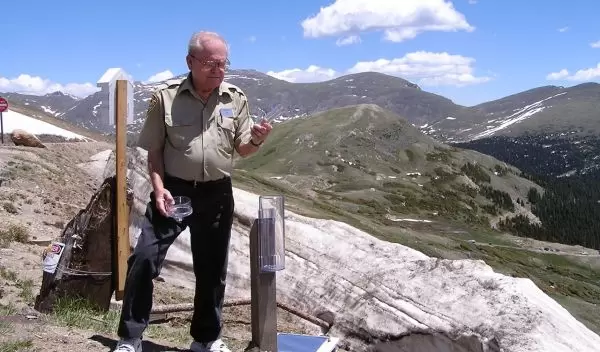
Crowdsourcing yields a more accurate picture of rainfall and snowfall
It's the season of dramatic weather, when everyone from the National Weather Service to farmers and insurers monitor predictions of weather conditions--and assessments of where severe weather and its impacts are greatest. In this environment, a citizen science project called CoCoRaHS--the Community Collaborative Rain, Hail and Snow Network--makes possible a detailed view of rainfall, snowfall and hail in regions around the country. The organizers have found that precipitation is often highly variable--in extreme cases varying by inches at locations just a few blocks from each other.
CoCoRaHS was first envisioned in 1997, after an intense rainstorm in Fort Collins, Colo., caused massive flooding and more than $200 million in damage.
"Nothing in the radar indicated that the storm would cause this much damage," said Nolan Doesken, state climatologist at the Colorado Climate Center at Colorado State University, and founder of CoCoRaHS. "There was incredible variation in the amount of rainfall within the affected area--from less than 2 inches to more than 14 inches (which was close to the average rainfall for the whole year) over a distance of just 5 miles."
The unexpected severity of the storm and its uneven impacts suggested to Doesken that enlisting individuals and families to report on precipitation from their locations could provide a more accurate and useful picture of rainfall and snowfall around the state and the country.
So in 1998, CoCoRaHS was born, with the National Science Foundation (NSF) and the National Oceanic and Atmospheric Administration later becoming major sponsors. Since the program started, 46,000 people, including participants from every state in the nation, have signed up through the CoCoRaHS website. To participate in the network, each citizen scientist must invest in a high-capacity 4-inch-diameter rain gauge (at a cost of about $30). All new participants in the CoCoRaHS network receive training in how to place their gauges and take accurate readings. Then, each time a rain, hail or snow storm crosses their area, volunteers take measurements of precipitation.
Their reports are then recorded on the CoCoRaHS website. The data are displayed and organized for a range of end users--from the National Weather Service to the U.S. Department of Agriculture to emergency managers, hydrologists, farmers, ranchers, research scientists, educators, and the general public.
During 2014 there were more than 19,000 active users who set out rain gauges and sent in reports. Doesken notes that more than 11,000 reports come in every day.
Just as an image is sharper the more pixels it contains, having citizen scientists report precipitation data from thousands of locations provides a detailed picture valuable for predictions, emergency planning, insurance estimates, and a number of other uses.
But beyond its value to consumers of the data, CoCoRaHS is engaging non-scientists in the kind of observation, reporting and analysis done by scientists. The educational aspects of their work are particularly important to members of the CoCoRaHS community.
In addition to coordinating the volunteer reporting, CoCoRaHS sponsors webinars every month featuring experts discussing some aspect of weather or climate. Topics such as cloud formation, lightning, and atmospheric rivers of Pacific water vapor aiming at the west coast have been popular with the volunteers.
Charles Kuster, one of the network's youngest volunteer leaders, got involved with CoCoRaHS in 2001, when he was in seventh grade. He served as the county volunteer coordinator in Leadville, Colo. Since then, Kuster finished high school, attended Colorado State University, then pursued graduate school at the University of Oklahoma, a premier institution for meteorology. He continues to help the program in his spare time. Many other students across the country have also been able to participate.
"We hear from many of our volunteers that they had no idea that precipitation varied so much," said Doesken. "Some volunteers regret not having gone into science in college. Some say that they wish they'd pursued a scientific career--but that this this experience is giving them an outlet."
"Being able to contribute scientific data to a network and see the impact of your observations is a powerful experience," said Ellen McCallie, program director for the Advancing Informal STEM Learning program, through which CoCoRaHS is funded. "We're excited to see people from different age groups, different backgrounds, and different parts of the country who are taking part in research through CoCoRaHS. What volunteers are finding is fascinating--and it helps all of us better understand what we've experienced in our lives with rain, hail, and snow.
Those interested in joining the CoCoRaHS network can find out more by watching the videos posted above or visiting the CoCoRaHS website.


